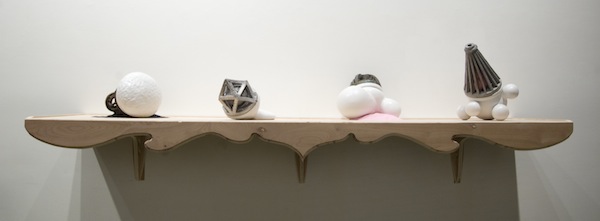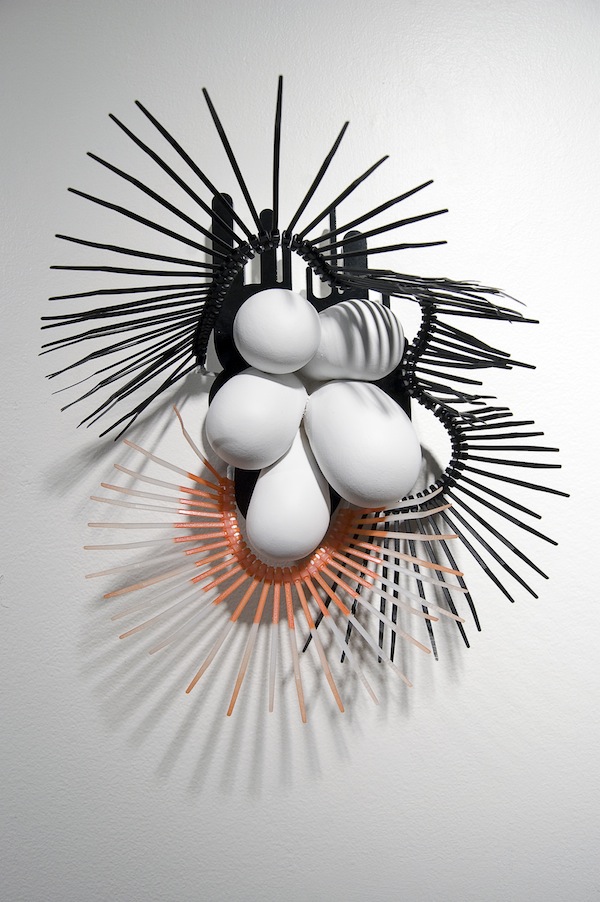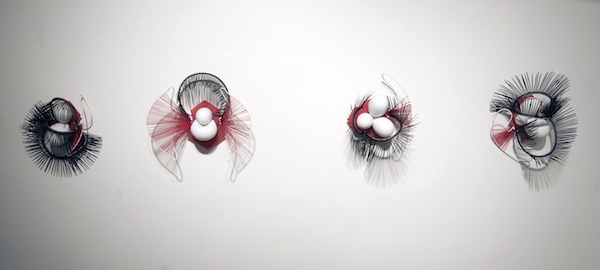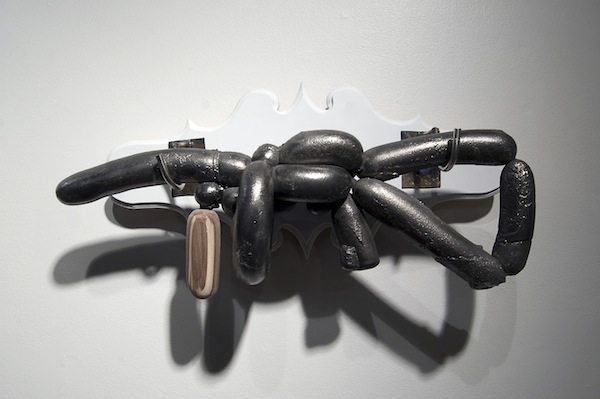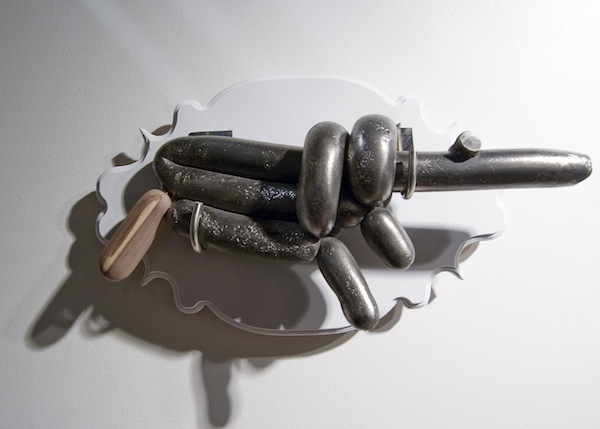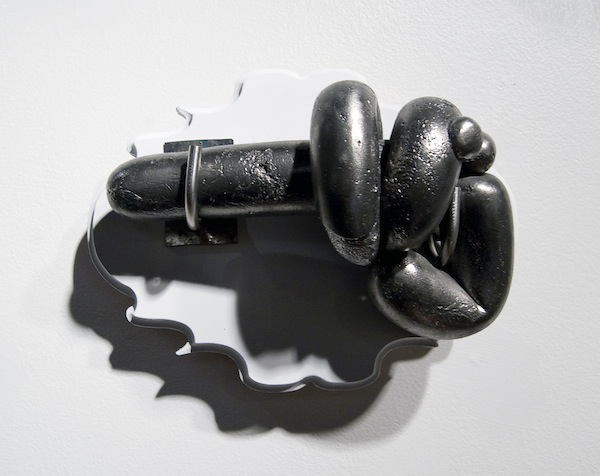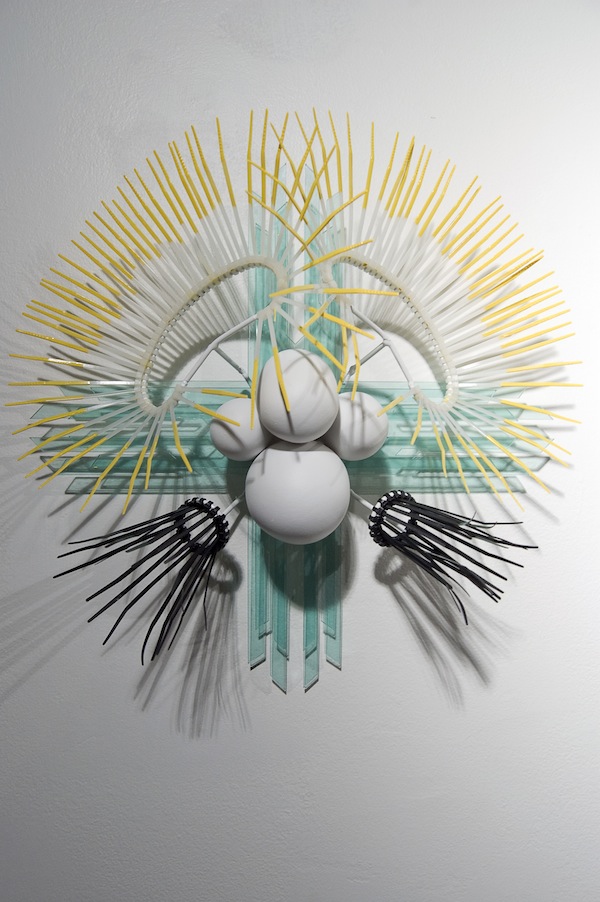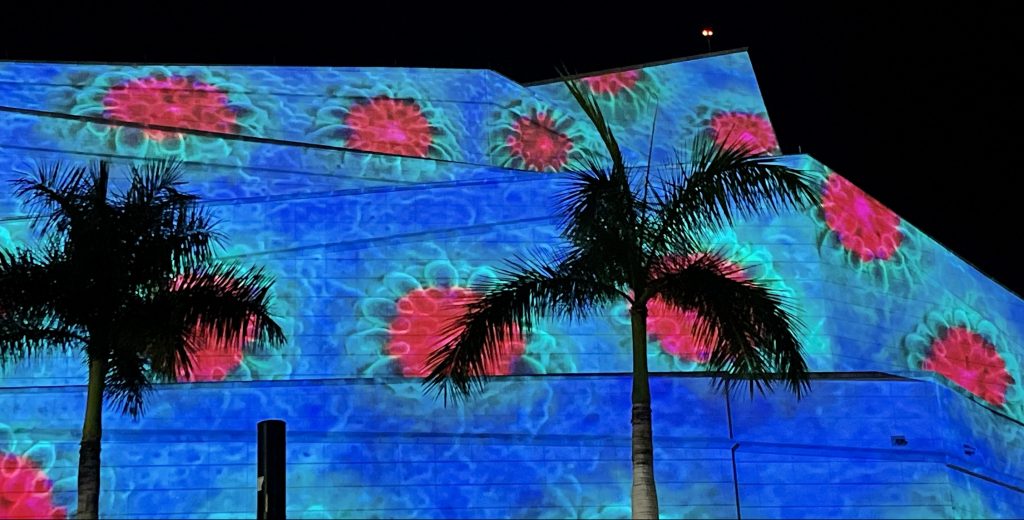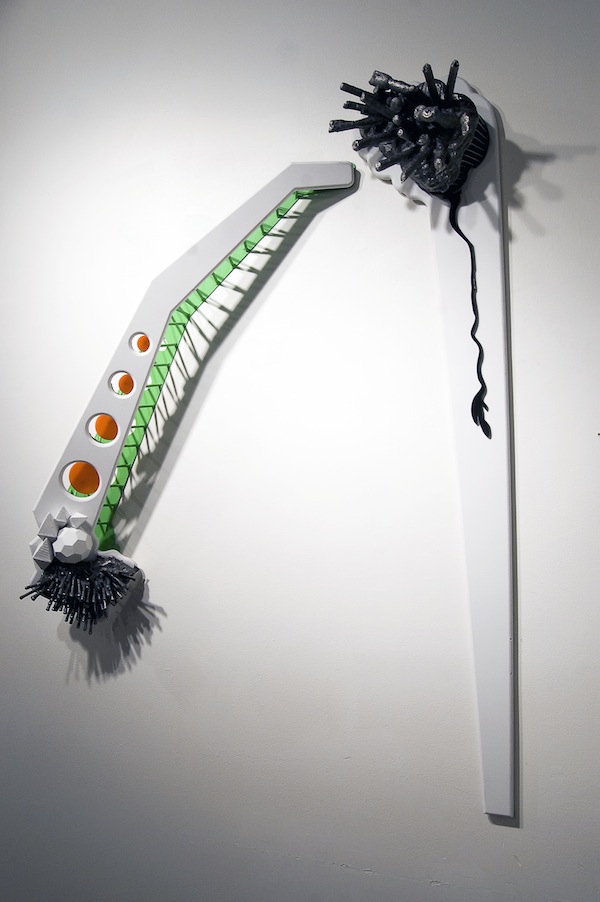
Process, repetition and cast iron: In conversation with Scott Berels
When I first came across the sculptures by Scott Berels that are up at the Cass Cafe through June 2, I honestly didn’t know what to think of them. Berels’s work compels the viewer and hints at meaning, but often evades simple categorization. Any viewer looking to quickly “conquer” a piece and move on will be frustrated. But a more patient viewer will find continually unfolding depth and delight in the sculptures. This is precisely Berels’s intention, who described his work’s interaction with its viewer as “a proverbial game of telephone, but neither of us knows how the phone works.” In conversation with Berels, I also learned he once biked from Detroit to the Florida Keys and built a skate park in his apartment. The result of our conversation is below.
Jeremy Schmall: How long have you lived in Detroit, and how do you feel about being a working artist in the city? Scott Berels: I’ve been in Detroit for eight years. Many of the concepts and themes in my work come from my experience living and creating in this city, and many of the forms and materials I use come from my interest in industrial architecture. I also take from forms found in graffiti often seen in the abandon industrial spaces I’ve explored, photographed and spray-painted in.
As far as the scene is concerned, I consider the local artists as my brothers and sisters. This means I value my connections with creative people as a scientist values others who have done research in their field. This also means I respect these people as friends and very valuable resources for inspiration and opportunities. I’ve shown art in Detroit for more than 10 years, and the scene here has always felt disconnected. I now realize that it is my responsibility to create connections on a singular level. There isn’t an art district or a place for artists to go for opportunities like in other major cities. This is a DIY city and that’s how you become involved.
JS: Is sculpture your primary creative outlet? What kinds of materials do you enjoy working with? SB: Sculpture is my primary form but I don’t limit sculpture to only 3-D objects. What truly stimulates me is exploring form and manipulating space. Through sculpture I am limitless in my application of materials. I’ve been conventional in the materials that I’ve explored but always unconventional in how I’ve combined them. I am a material junkie. I use cast metal, particularly iron right now. I’ve cast aluminum, bronze, tin and pewter, as well. My work consists of a combination of these cast elements mixed with fabricated steel, clay and porcelain, wood, zip ties, string and spray paint. In my past work I used a plethora of industrial materials and found objects, including foam, wire, scrape steel, empty spray cans, animal skulls, salvaged metal fixtures and empty shotgun shells.
I view this art form differently than other forms. Unlike a painter or photographer who makes paintings or photographs, a sculptor makes more than just an image. This could go as deep as even being less tangible than an existing material. I’ve imagined spaces and objects; this in itself could be considered sculpture even without a thing being produced. I feel like sculpture can be transcended into a simple movement or moment or even thought. This is basically the opposite of capturing a single moment or concept and painting it or photographing it. Any physical manifestation of an emotion or thought may be all that is needed to describe something as sculpture in this sense. One example of this I have found in skating. When I skate, it is all about the terrain I am jumping on. In this, the maneuvers my body makes during these stunts is a trigger for the reaction of object and process. By utilizing ordinary objects in our surroundings to create a beautiful trick, the object itself embodies a complete transformation from what it was just moments before being stunted on. In this, I am moving into the direction of performance sculpture. I am working on a new body of sculpture that will involve 3-D projection mapping technology and performance mixed with some of the classical applications I currently work in.
JS: You mentioned that I wouldn’t be able to necessarily pick up the meaning of a piece just from looking at it, but that it meant something to you based on what you were thinking about at the time of its creation. What is your hope, in terms of the viewer’s reaction, to your work? SB: I hope to guide my viewers’ thoughts through my titles. As far as the experience to be had from viewing my work, I would prefer the viewers to have their own experience. Now, if they seem to align with what I am dealing with in the work, I feel a great connection to that. Its almost like I try to connect with my viewer with a different form of communication. This is a proverbial game of telephone, but neither of us knows how the phone works or what it is. The work in the Cass Cafe show is more of a regurgitation of my personal interests and experience. In this I combine formal elements I pull from architecture and molecular imagery recoded from nature. This involves patterns in industrial architecture and in the microcrystalline structures. I don’t feel like this is entirely apparent to most viewers. I prefer these forms to be ambiguous while being directly related to the structures found in everything that exists. Along with this, my entire history of experience plays a role in the decisions I make while creating. I let my memories of my childhood and times with friends and family direct the emotions I express in my titles. While my adventures and the tragedies in my life drive the formal direction of a piece. Working in this way is an extinction of my existential view on my life. The experience of making reminds me of the deep systematic connectedness of everything, and this is how I contribute into this cycle.
JS: It seems like a fair amount of your work is process-oriented, where the finished product is not necessarily as important to you as going through the challenging and often repetitive nature of assembling the piece. Can you speak to that a little? SB: To live life as a journey is to live each moment as the destination. In this my work is not about the thing in front of you, but rather what it went through to get there. The object is important but it’s a byproduct. Through the act of repetition I go through a meditative state where I confront obstacles in my life and develop who I am. This is a continuation of what then goes back into the work. If you ask me what my work is about, it is the work and it is everything.
JS: There’s three pieces hanging over the bar that look like balloon guns but are actually cast iron. What’s the story behind them? SB: I continually try to find ways to create refined objects using inexpensive and fast applications. Iron casting is a very labor-intensive process and requires some serious footwork, time and money. I try to find ways to cut some of this down, and that’s where the balloons come in. I am developing ways of pattern-making that are time efficient, less harmful to the environment and unique. I make forms from party balloons, make a mold of the balloons, then cast iron into that mold. I have been interested in inflated objects and wanted to make something that seemed to be hollow or inflated. The balloon machine guns are solid heavy objects and yet look airy and playful. This was part of the intent behind the work. I felt like a lot of the work in the show was very serious, and I wanted to do something fun. The guns are phallic and intended to be funny (like a clown), but at the same time create a dialogue on war, violence and death.
JS: Your job sounds pretty amazing, and it relates closely to your work. Can you speak about what you do? SB: Techshop is a membership-based workshop located in Allen Park. We are a fully functional workshop designed to put industry in the hands of the people. So the idea is you make whatever you want and my job is to help you do it. I am a dream consultant there. What that means is I am available for technical advice in regards to design, materials, equipment and machine operation and troubleshooting, encouragement or to simply hold or lift something. Through working here, I have access to some sophisticated equipment that is finding its way into my personal work. I generally work fairly classical in that I use my hands in molding clay and making molds for metal casting, but I am now using CNC applications to create objects, and this is completely changing the work. There is a grand opening event for Techshop on May 5 and 6.
JS: You said you built a skate park in your apartment. How is that possible? SB: I have been Rollerblading for more than 15 years. The Detroit Rollerblading scene is very closely connected. It’s like if you live in Michigan and Rollerblade, you will know every other Rollerblader in Michigan. The entire industry is like this due to it failing in the early 2000s. Now it’s very independent and fairly underground. Anyway, the reason I built the first 8 foot-long above-knee high-grind box in my loft was because I wanted to bring rollerblading to me. I missed the largest Rollerblade contest in the world that happens to be held at Modern Skate and Surf in Royal Oak. This was the incentive to bring Rollerblading to me. After “The Skate Dr.” Al Dolaga moved in, we built two 4 foot quarter pipes, a 19 foot long handrail and two grind boxes of 8 feet and 14 feet. This has been a great attraction for many local and international rollerbladers. We have sort of established a hub for Detroit Rollerblading. My apartment is 2,500 square feet, so there is plenty of room for obstacles while remaining both a living and working space. We call it “Detroit FOOT!” I once showed art shows in the same space under the name “The Greenthumb Gallery,” so remnants of past installation work and my own 2-D works are littered about in the space. Really makes for some cool backdrops for video footage of the skating.
All images copyright Scott Berels.
Recent Content
-
Artsarticle ·
-
Artsarticle ·
-
Artsarticle ·
